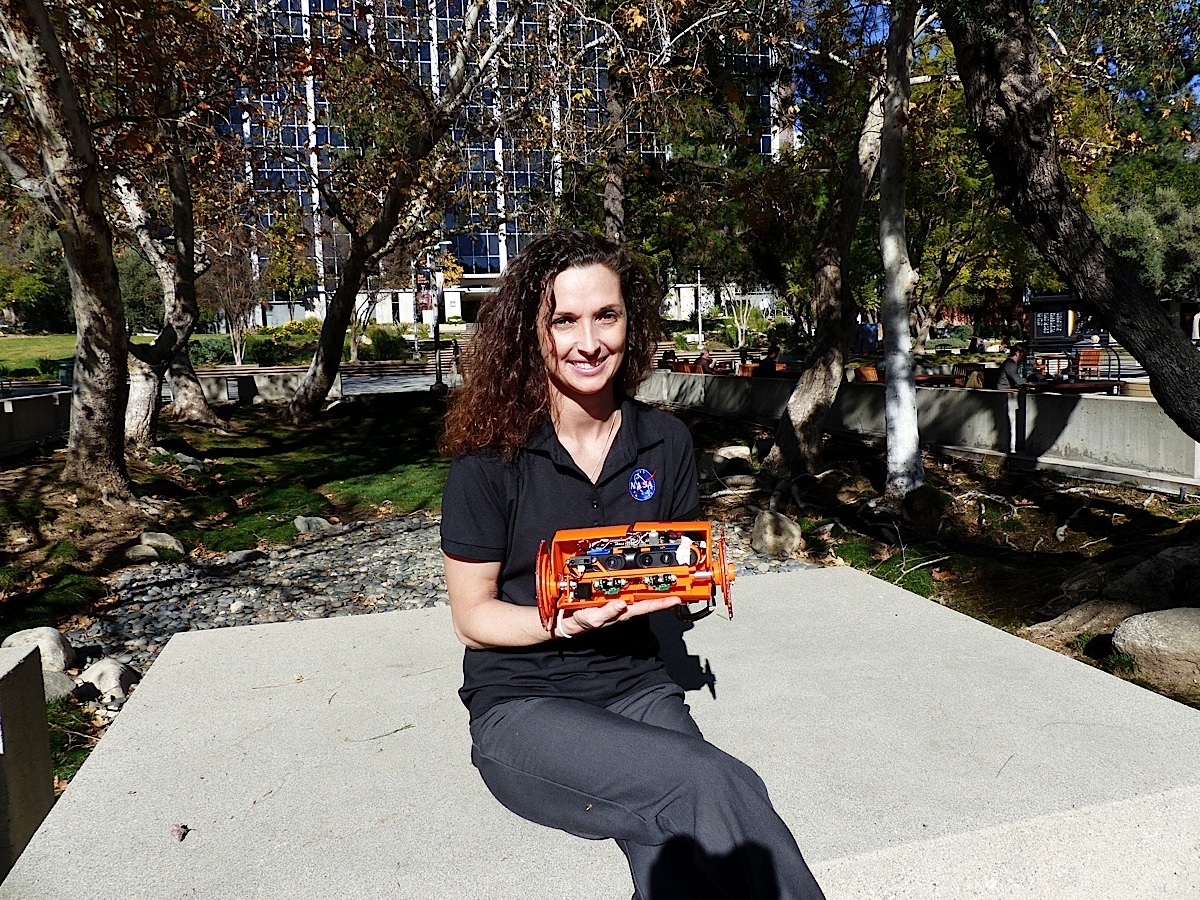
Researchers at NASA’s Jet Propulsion Laboratory have been working on robots to help explore volcanoes.
Working at Kilauea volcano on the island of Hawaii, researchers, including Carolyn Parcheta and Aaron Parness, have been developing machines that can explore areas very difficult for humans to access.
VolcanoBot 1 was tested in May of 2014 and was used to explore an inactive crack that had previously erupted magma.
NASA says the work will have use both on Earth and elsewhere in the Solar System. Exploring apparent volcanic vents on the like of Mars or fissures on the Moon could help scientists to better understand how they were formed and what activity has occurred over time.

VolcanoBot 1 has two wheels and is about 12 inches long, with relatively large 6.7-inch wheels. The robot is based on a previous effort, the Durable Reconnaissance and Observation Platform (DROP).
The robot was used to try and map magma pathways and managed to reach a depth of 82 feet, being limited by its tether.
To go further, the team is currently working on VolcanoBot 2. Mark 2 is more mobile and smaller, being just 10 inches long with 5-inch wheels and having stronger motors.

It also stores data internally rather than transmitting it back up. This allows the team to limit the amount of cabling coming but to the surface.
Speaking about why the work is important, Parcheta said: “In order to eventually understand how to predict eruptions and conduct hazard assessments, we need to understand how the magma is coming out of the ground. This is the first time we have been able to measure it directly, from the inside, to centimeter-scale accuracy.”

Parcheta was also a finalist in a National Geographic competition. You can watch her present a video on their site.
VolcanoBot 2 will be put through its paces at Kilauea in March this year.


